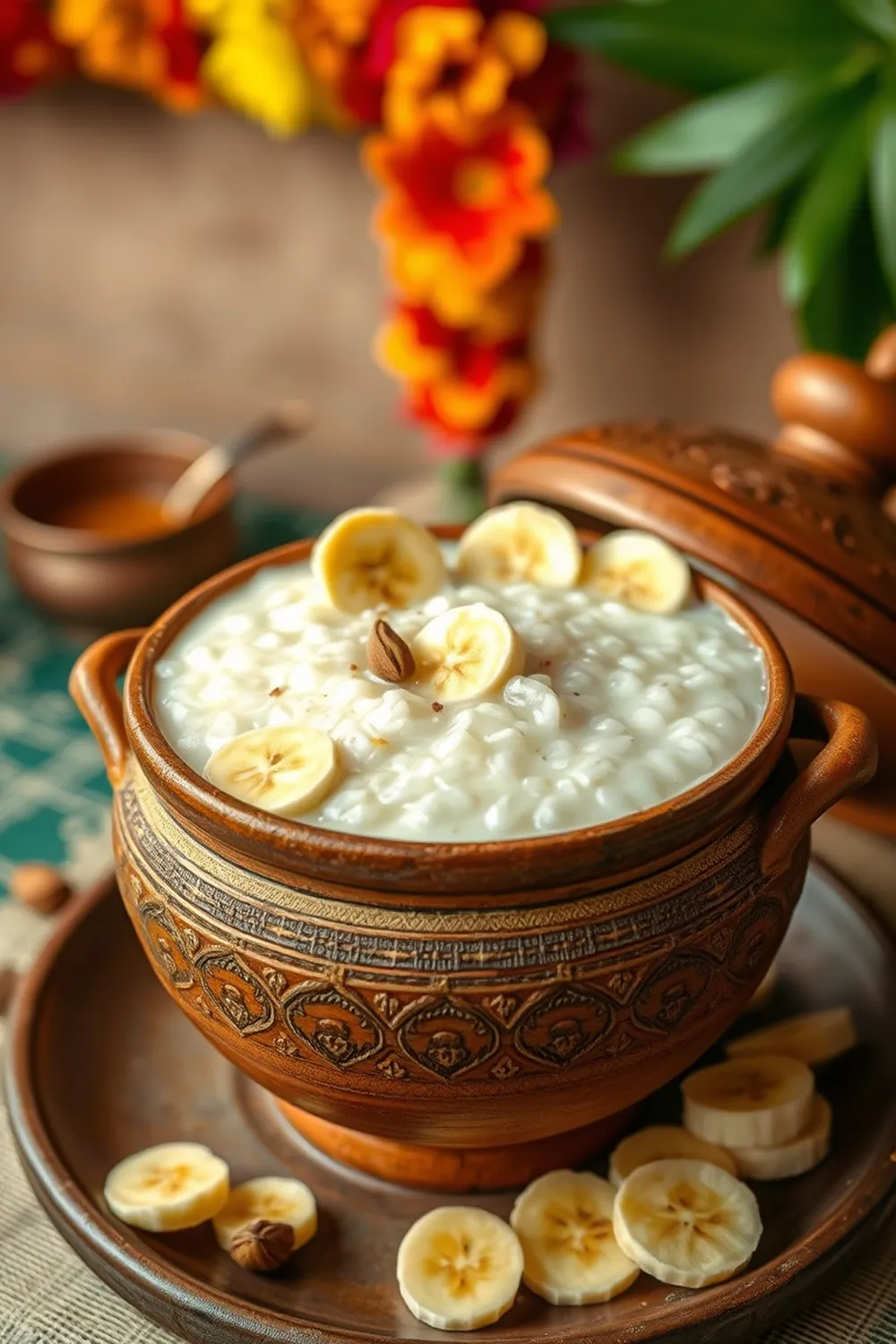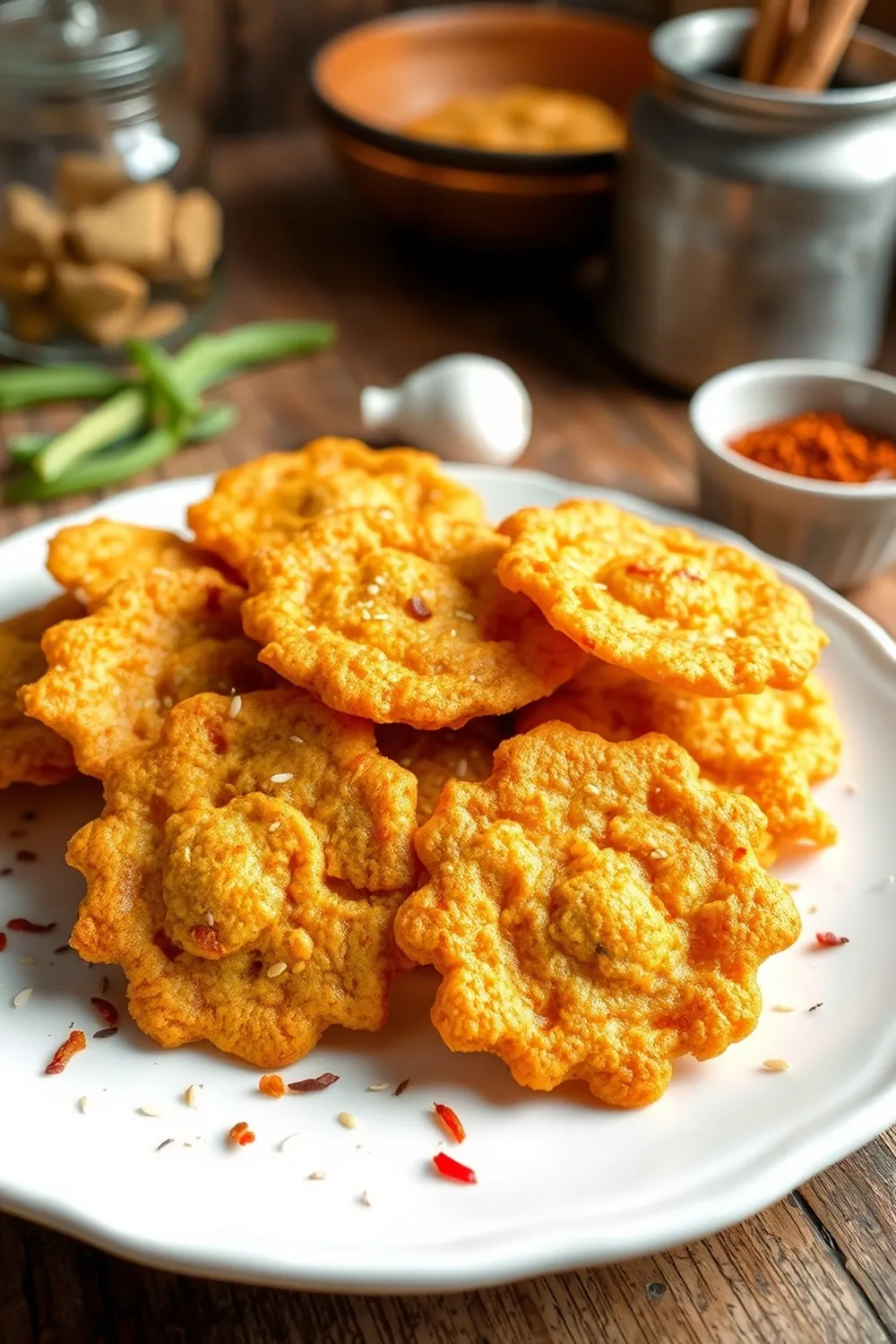- Cream ghee and yogurt (curd) until light and fluffy.
- Sift flour, salt, baking soda, and baking powder into the creamed mixture. Mix gently until just combined.
- Add cold water gradually to form a soft, pliable dough. Rest, covered, for 30 minutes.
- Prepare sugar syrup by dissolving sugar in water. Add cardamom and saffron; simmer until it reaches a one-string consistency.
- Shape dough into small balls, flatten slightly, and create a dent in the center with your thumb.
- Fry Balushahi in medium-hot oil on low heat until golden brown and crisp (approximately 8-10 minutes per batch).
- Soak fried Balushahi in warm sugar syrup for 2-3 minutes. Drain and serve.
- Calories:350 kcal25%
- Energy:1464 kJ22%
- Protein:3 g28%
- Carbohydrates:45 mg40%
- Sugar:30 mg8%
- Salt:150 g25%
- Fat:18 g20%
Last Updated on 4 months by Neha Deshmukh
Authentic Balushahi Recipe – Saffron & Cardamom Indian Sweet
Introduction
Oh, Balushahi! Just the name conjures up memories of festive seasons back home, the sweet aroma filling the air, and the delightful crunch with every bite. This isn’t just a sweet; it’s a little piece of Indian culinary heritage. I remember the first time I attempted this recipe – it took a couple of tries to get the texture just right, but trust me, the effort is so worth it. Today, I’m sharing my tried-and-true recipe for perfectly flaky, melt-in-your-mouth Balushahi, infused with the delicate flavors of saffron and cardamom. Let’s get baking!
Why You’ll Love This Recipe
This Balushahi recipe isn’t just about following steps; it’s about experiencing a tradition. You’ll love it because:
- It delivers that authentic, melt-in-your-mouth texture.
- The saffron and cardamom create a truly exquisite flavor profile.
- It’s perfect for festivals, celebrations, or simply a sweet treat.
- I’ve included all my tips and tricks to ensure your success!
Ingredients
Here’s what you’ll need to create this delightful sweet:
- ¼ cup ghee (approximately 60ml)
- ¼ cup cold curd (dahi) (approximately 60ml)
- 2 cups all-purpose flour (maida) (approximately 250g)
- 1 pinch salt
- 1 pinch baking soda
- ½ teaspoon baking powder
- 8-9 tablespoons cold water (approximately 120-135ml)
- 1 heaped cup sugar (approximately 200g)
- ½ cup water (approximately 120ml)
- ½ – 1 teaspoon cardamom powder
- 10-12 saffron strands
- As needed oil (for frying)
Ingredient Notes
Let’s talk ingredients – a few little things can make a big difference!
Ghee: The Importance of Quality Ghee
Ghee is the heart of this recipe, lending richness and that characteristic flaky texture. Use a good quality ghee for the best results. Homemade is wonderful if you have it, but a reputable brand works perfectly too.
Curd (Dahi): Using Sour vs. Fresh Curd
Slightly sour curd works best here. It helps with the tenderness of the Balushahi. If your curd isn’t sour enough, you can leave it out at room temperature for a few hours to develop a bit of tang.
Maida (All-Purpose Flour): Achieving the Right Texture
Maida is essential for that signature melt-in-your-mouth texture. Don’t substitute it with whole wheat flour, as it won’t give you the same result. Sifting the maida is crucial to ensure a light and airy dough.
Saffron Strands: Sourcing and Blooming for Maximum Flavor & Color
Good quality saffron is worth its weight in gold! Look for deep red strands. To get the most flavor and color, “bloom” the saffron by soaking it in a tablespoon of warm milk or water for at least 30 minutes before adding it to the syrup.
Cardamom Powder: Freshly Ground vs. Store-Bought
Freshly ground cardamom powder is always best – the aroma is incredible! If you’re using store-bought, make sure it’s relatively fresh.
Regional Variations in Balushahi – Texture & Flavor Profiles
You’ll find Balushahi varies slightly across India. Some regions prefer a denser, more biscuit-like texture, while others aim for a super flaky one. Flavorings can also differ – some add a touch of rose water or even a hint of nutmeg.
Step-By-Step Instructions
Alright, let’s get cooking!
- First, in a large bowl, cream together the ghee and curd until it’s light and fluffy. This takes a little elbow grease, but it’s important for a tender Balushahi.
- Now, sift in the flour, salt, baking soda, and baking powder. Gently mix everything together with your hands until it resembles breadcrumbs. Don’t overmix!
- Gradually add the cold water, a tablespoon at a time, and bring the dough together. It should be soft and pliable, but not sticky.
- Cover the dough and let it rest for about 15 minutes. This allows the gluten to relax, resulting in a softer Balushahi.
- While the dough rests, prepare the sugar syrup. In a saucepan, dissolve the sugar in water. Bring to a boil, then reduce the heat and simmer for about 8-10 minutes, until you reach a one-string consistency (check by taking a drop between your thumb and forefinger – it should form a single string).
- Add the cardamom powder and bloomed saffron to the syrup. Stir well and keep warm.
- Now, shape the dough into small, round balls, about 1 inch in diameter. Gently flatten each ball slightly and create a small dent in the center with your thumb.
- Heat oil in a deep frying pan or kadhai over medium-low heat. The oil shouldn’t be smoking hot – we want to cook the Balushahi slowly and evenly.
- Fry the Balushahi in batches, about 5-6 at a time, for 12-15 minutes per batch, or until they are golden brown and crisp. Flip them occasionally to ensure even cooking.
- Immediately transfer the fried Balushahi to the warm sugar syrup. Soak them for 15 minutes, turning them occasionally to coat them evenly.
- Remove the Balushahi from the syrup and drain them on a wire rack. Serve warm or at room temperature.
Expert Tips
Here are a few things I’ve learned over the years to help you nail this recipe:
Achieving the Perfect Dough Consistency
The dough should be soft, but not sticky. If it’s too dry, add a little more water, a teaspoon at a time. If it’s too sticky, add a little more flour.
Frying Temperature Control for Crisp Balushahi
Low and slow is the key! Frying at a lower temperature ensures the Balushahi cooks through without burning.
Syrup Consistency – The Key to Success
The one-string consistency is crucial. If the syrup is too thin, the Balushahi will become soggy. If it’s too thick, it won’t absorb properly.
Preventing Balushahi from Becoming Soggy
Don’t overcrowd the pan when frying. And make sure the syrup is warm, not hot, when you add the fried Balushahi.
Tips for Shaping Balushahi
Don’t worry about making them perfectly round! A slightly rustic shape adds to their charm.
Variations
Let’s get creative!
Vegan Balushahi Adaptation
Substitute the ghee with a vegan butter alternative and the curd with plant-based yogurt.
Gluten-Free Balushahi (Using Alternative Flours)
Experiment with a gluten-free flour blend, but be aware the texture will be different. A blend with rice flour and almond flour can work well.
Spice Level Adjustment – Adding a Hint of Ginger
Add ¼ teaspoon of grated ginger to the dough for a subtle warming spice.
Festival Adaptations – Diwali, Holi, Eid
Balushahi is a staple for many Indian festivals! Feel free to add a touch of rose water for a festive aroma.
Balushahi with Rose Water
Add 1 teaspoon of rose water to the sugar syrup for a fragrant twist.
Serving Suggestions
Balushahi is delicious on its own, but it also pairs beautifully with a cup of chai or a glass of cold milk.
Storage Instructions
Store Balushahi in an airtight container at room temperature for up to 3-4 days. They tend to lose their crispness over time, but they’ll still taste delicious!
FAQs
Got questions? I’ve got answers!
What makes Balushahi different from Imarti?
Balushahi is made with maida and has a flaky, layered texture, while Imarti is made with urad dal flour and has a more spongy, coiled shape.
Can I make the sugar syrup ahead of time?
Yes, you can! Just store it in the refrigerator and reheat it gently before using.
How do I know when the oil is at the right temperature for frying?
Drop a tiny piece of dough into the oil. If it sizzles and rises to the surface slowly, the oil is ready.
My Balushahi absorbed too much syrup – what went wrong?
The syrup was likely too thin, or the Balushahi wasn’t fried enough.
Can I use a different type of flour besides maida?
While you can experiment, maida is essential for the traditional texture.
How long does Balushahi stay fresh?
Best enjoyed within 3-4 days, stored in an airtight container.
What is the best way to store leftover saffron strands?
Store saffron strands in an airtight container in a cool, dark, and dry place. They’ll retain their flavor and color for much longer.










